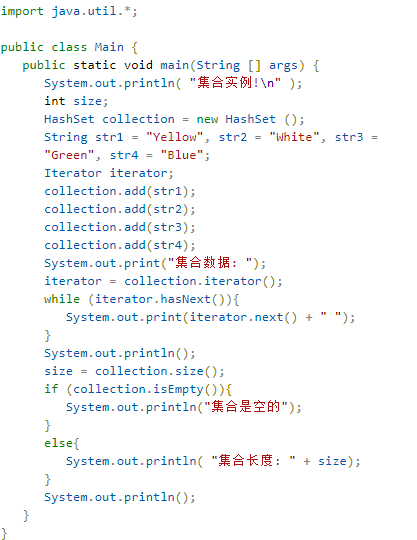
Java 实例 - 集合长度
版权声明:本文内容由阿里云实名注册用户自发贡献,版权归原作者所有,阿里云开发者社区不拥有其著作权,亦不承担相应法律责任。具体规则请查看《阿里云开发者社区用户服务协议》和《阿里云开发者社区知识产权保护指引》。如果您发现本社区中有涉嫌抄袭的内容,填写侵权投诉表单进行举报,一经查实,本社区将立刻删除涉嫌侵权内容。
以下实例演示了如何使用 Collections 类 的collection.add() 来添加数据并使用 collection.size()来计算集合的长度:

Main.java 文件 import java.util.*;
public class Main { public static void main(String [] args) {
System.out.println( "集合实例!\n" ); int size; HashSet collection = new HashSet (); String str1 = "Yellow", str2 = "White", str3 = "Green", str4 = "Blue";
Iterator iterator; collection.add(str1);
collection.add(str2);
collection.add(str3);
collection.add(str4); System.out.print("集合数据: ");
iterator = collection.iterator();
while (iterator.hasNext()){ System.out.print(iterator.next() + " ");
} System.out.println(); size = collection.size(); if (collection.isEmpty()){ System.out.println("集合是空的"); } else{ System.out.println( "集合长度: " + size); } System.out.println(); } }
以上代码运行输出结果为:
集合实例!
集合数据: White Yellow Blue Green
集合长度: 4